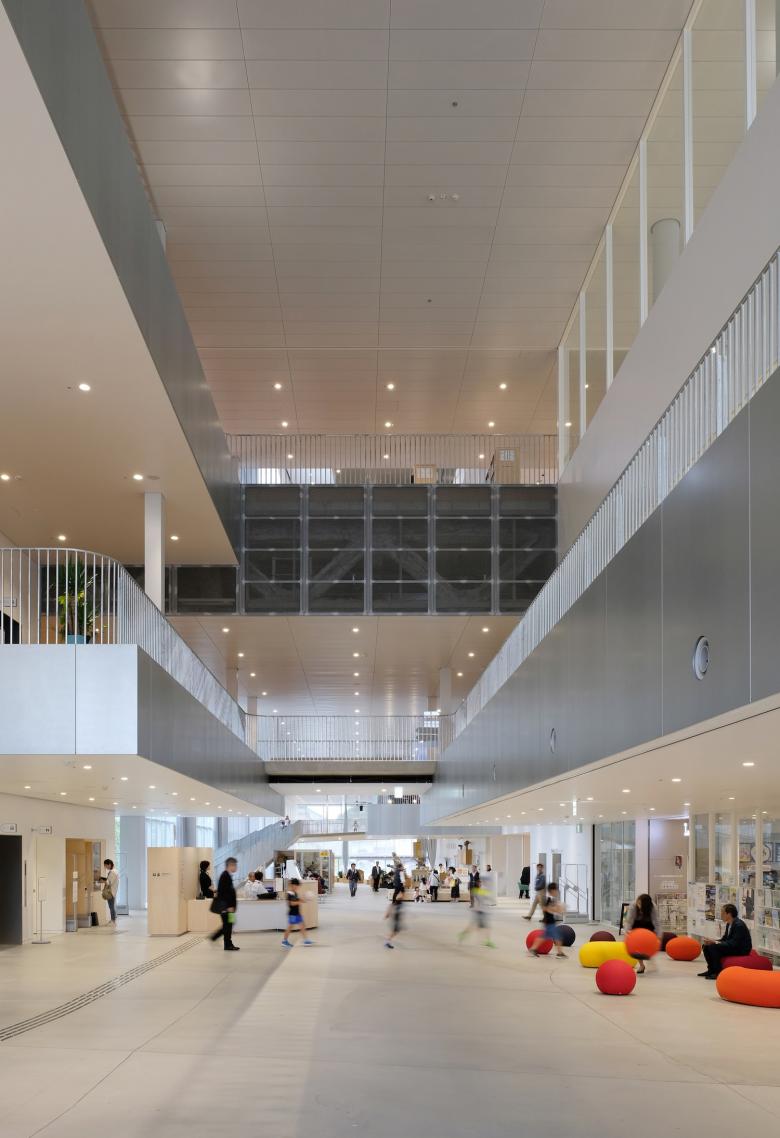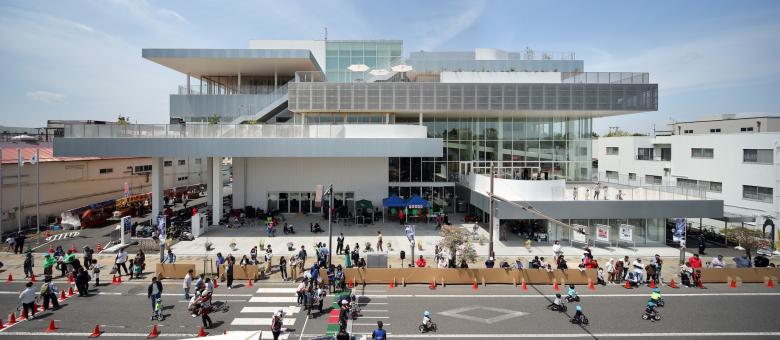Sukagawa Community Center
Sukagawa City, Fukushima, Japan
- Architects
- Unemori Architects
- Location
- Sukagawa City, Fukushima, Japan
- Year
- 2019
- Collaborative Design
- Ishimoto Architectural & Engineering Firm
"Architecture Connecting the City and People" – This is a multipurpose complex built in Sukagawa City, Fukushima Prefecture as part of a reconstruction project in the wake of the Great East Japan Earthquake. The goal was to regain the lost liveliness of the city and regenerate citizen interaction by creating an activity base with multiple functions including a library offering a lifelong learning program, childcare support, museum among others in the center of the city that was severely damaged by the earthquake.
Floor slabs were divided into small sections, stacked to form an incremental setback on the site facing a historic main street, while much attention was paid not to distract the neighboring houses. Many terraces resulted from the floor setbacks provide places where people can engage in various activities while overlooking the city, and the void created on the inside connects each floor sectionally and visually. The first floor, which serves as the main entrance to the facility, is a sloped space connecting the 2.5-meter difference in elevation of the site, where a waiting area, cafe, and event space are provided in the open atmosphere seamlessly connected with the hilly city of Sukagawa.
Through a series of citizen workshops, we aimed to create an organic architecture transcending functional boundaries. We created various spaces for people to stay, including a bright socializing space, quiet reading corner, three-dimensional play space, space under the eaves like engawa (a wooden veranda along the edges of a traditional Japanese dwelling) among others, and placed books throughout the facility. The upper floors are connected by gentle slopes and stairs, and you can walk around the entire building as if taking a walk around the city.
"Megastructure Supporting Various Activities" – In order to realize these complex spaces, we designed the third and fourth floors as a megastructure composed of trusses. The cantilevered slab of the lower floor suspended from the megastructure is supported by columns on the upper floors which positions are shifted accordingly to bear the load. Furthermore, plenum trusses provide space for the installation of air-conditioning equipment and smoke exhaust routes in case of fire, while serving as a sound-absorbing layer protecting the quiet library environment on the upper floors against noise coming from the lower floors. These floors with different functions consisting of structural systems float in the air, while supporting various activities of citizens.
"Transforming a Complex into an Integrated Facility" – Main functions of the facility, including the library, community center, and childcare, were reclassified from conventional categories into nine verb- and activity-oriented themes such as ""learn,"" ""create,"" and ""play."" Our idea was to provide opportunities for many people to encounter and interact with knowledge, information, and people that they had not originally expected by using themes that are easy to imagine and understand. In addition, we aimed to create a new public space where information and activities are integrated by placing books related to the nine themes throughout the facility so that the entire facility would serve as a library and a community center.
Related Projects
Magazine
-
Winners of the 5th Simon Architecture Prize
3 days ago
-
2024, The Year in …
5 days ago
-
Raising the (White) Bar
5 days ago
-
Architects Building Laws
1 week ago










